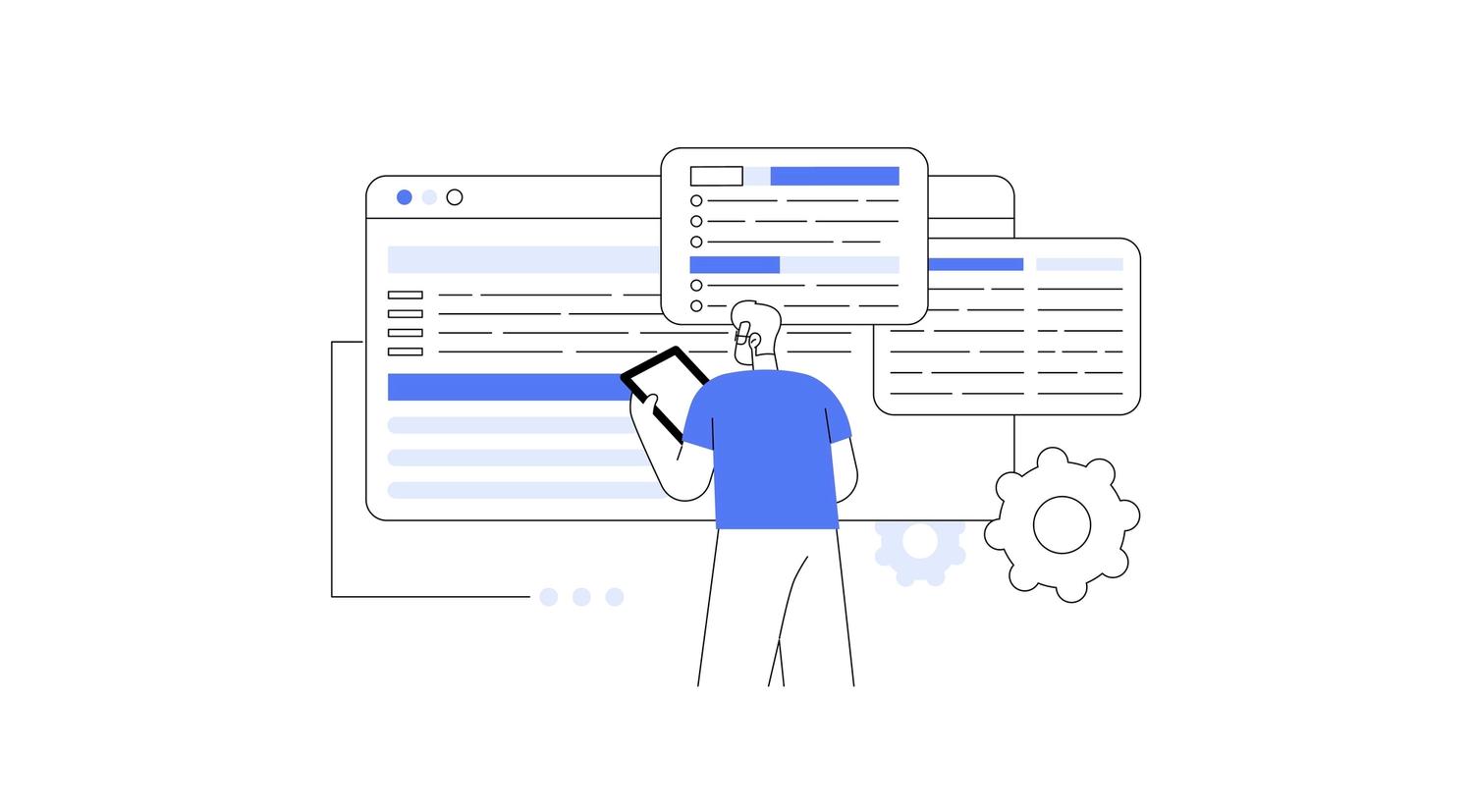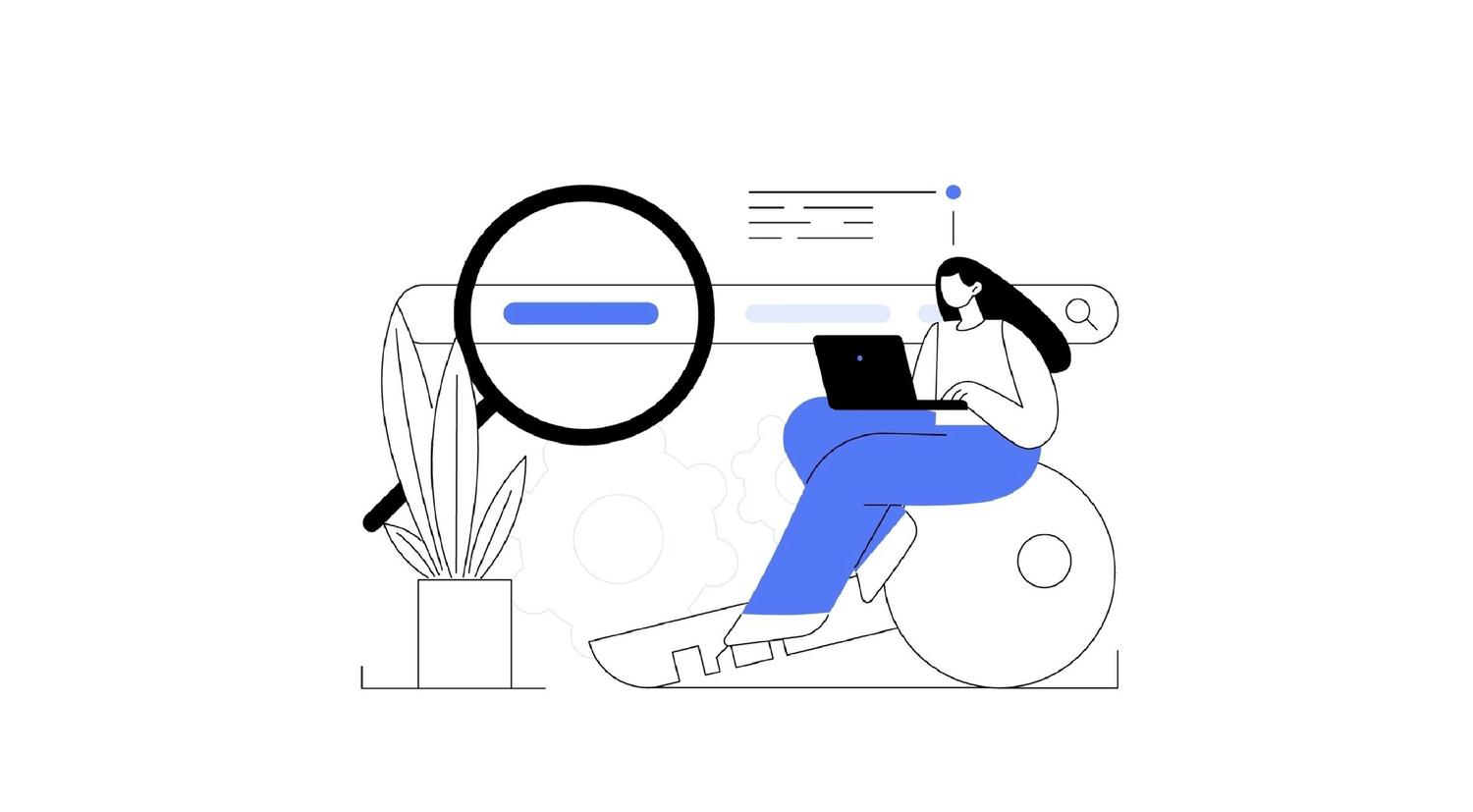How can you optimise a website with millions of web pages?
Optimising a massive enterprise website is no walk in the park. To dominate search results, you’ll need more than the basics. Think advanced strategies and flawless execution to keep your site visible and user-friendly.
In this guide, we’re breaking down three must-have optimisation solutions to conquer enterprise SEO.
Let’s dive in!

1. Improve Crawlability & UX
Making sure your site is crawlable and user-friendly is the bedrock of a successful enterprise SEO strategy. If Google struggles to crawl your site, your organic traffic and search engine visibility will suffer.
Here are some essential techniques to improve both.
Metadata & header hierarchy
Make it easy for search engines to find, index, and understand each page on your site with well-optimised meta titles, descriptions, and headers. This boosts your page’s visibility and click-through rates from search engine results pages (SERPs).
Here’s how to get them right:
Meta Titles
Meta titles are a prime example of when less is more. To avoid truncation in SERPs, keep them under 60 characters and include primary keywords.
Formula: Primary keyword + hyphen (-) + Brand name
Example: "3 Optimisation Solutions for Enterprise SEO - Indago Digital"
Meta Descriptions
Aim for descriptions under 160 characters and make sure to target primary and secondary keywords. Finish with a compelling call-to-action (CTA) that includes a verb and a sense of urgency to increase CTR.
Formula: Primary keyword + Secondary keyword + CTA
Example: “Want to level up your business's digital marketing strategy? Discover our top 3 solutions for enterprise SEO optimisation. Download the guide now!”
Headers
Headers should be logically formatted to outline your content structure. A clear header hierarchy not only helps search engines understand your page but also makes it easier for users to navigate and absorb key points, reducing bounce rates.
Each page should have only one H1 tag, with a mix of other headings (H2, H3, etc.) to support readability and improve user experience.
Example:

Internal links
Linking related content within your site is a powerful tactic for optimising your enterprise SEO efforts and providing a smoother user experience.
Internal linking helps search engines understand the relationship between different pages, while also keeping users engaged by providing easy access to other relevant content.
- Diverse Anchor Text: Use long-tail keywords and avoid exact matches.
- Strategic Linking: Link pillar content to supporting articles to build a strong content network.
- Logical Structure: Group related content and link thematically similar pages together.
- Distribute link equity: Link to high-performing pages to increase the likelihood of conversions.
- External links: Acquire backlinks pointing to your site from high-authority domains.
Structured data & schema
Schema markup, also known as structured data, allows search engines to better understand your content and can help you rank for enhanced SERP features like featured snippets and PAAs.
Common schema used for enterprise SEO strategies include:
- Product schema
- Article schema
- Local Business schema
- Event schema
- Review schema
- FAQ schema
- Breadcrumb schema
Learn more about How to Do Technical SEO for a Huge Website.

2. Tackle Page Bloat
Page bloat is the silent killer of enterprise websites—where an excessive amount of low-quality pages dilute overall site quality. If you want to climb the search rankings, trimming the fat is a must.
Remove or refresh
Regularly audit your site to identify thin, duplicate, or underperforming pages.
Thin content offers little value to users and should be either optimised with high-quality content or removed altogether. Duplicate content can confuse search engines, leading to lower rankings, so it should be consolidated or differentiated.
Discover our 5 Insider Tips For Enterprise Content Marketing.
Redirects & canonical tags
Effective use of redirects and canonical tags helps eliminate duplicate content and ensure search engines index the correct version of a page.
Redirects help preserve link equity by guiding users to the appropriate pages, while canonical tags indicate the preferred version of a web page when multiple versions exist.

3. Refine your Keyword Strategy
Keyword research is at the heart of any impactful SEO campaign. Sharpen your strategy by keeping a close eye on branded terms and using your domain authority to zero in on the right keywords.
Go after competitive keywords
Enterprise-level websites often have high domain authority, allowing them to better compete for top keywords. Dive deep into keyword research using tools like SEMrush and Ahrefs to spot high-volume, competitive terms that match your business goals.
Weave these keywords naturally into your content (resisting the urge to keyword stuff) and watch your site soar in SERP results.
Target international & region-specific keywords
For enterprise companies operating in multiple regions, targeting international and region-specific keywords is crucial. Tailor your content to each region and language to boost local SEO, and sprinkle in local landmarks, events, and cultural nods to hit home with regional audiences.
Use tools like Google Analytics and Search Console to zero in on region-specific search trends. The result? A broader, more engaged organic audience.
Monitor branded keywords
Stay vigilant about how people are searching and discussing your brand online.
Keep tabs on your brand's keywords to address any negative mentions promptly and leverage positive ones to build credibility. This proactive stance not only keeps your online image in check but also fuels your enterprise SEO game for the long haul.
Conclusion
Enterprise SEO optimisation is a mammoth task, but with the right solutions, you can achieve remarkable results.
Indago Digital is an experienced SEO agency with dedicated enterprise SEO teams providing the knowledge and knowhow needed to implement these strategies effectively.
Book a chat today to discuss your SEO and content needs—and watch your online performance soar!
Written by
Brίd Flynn





